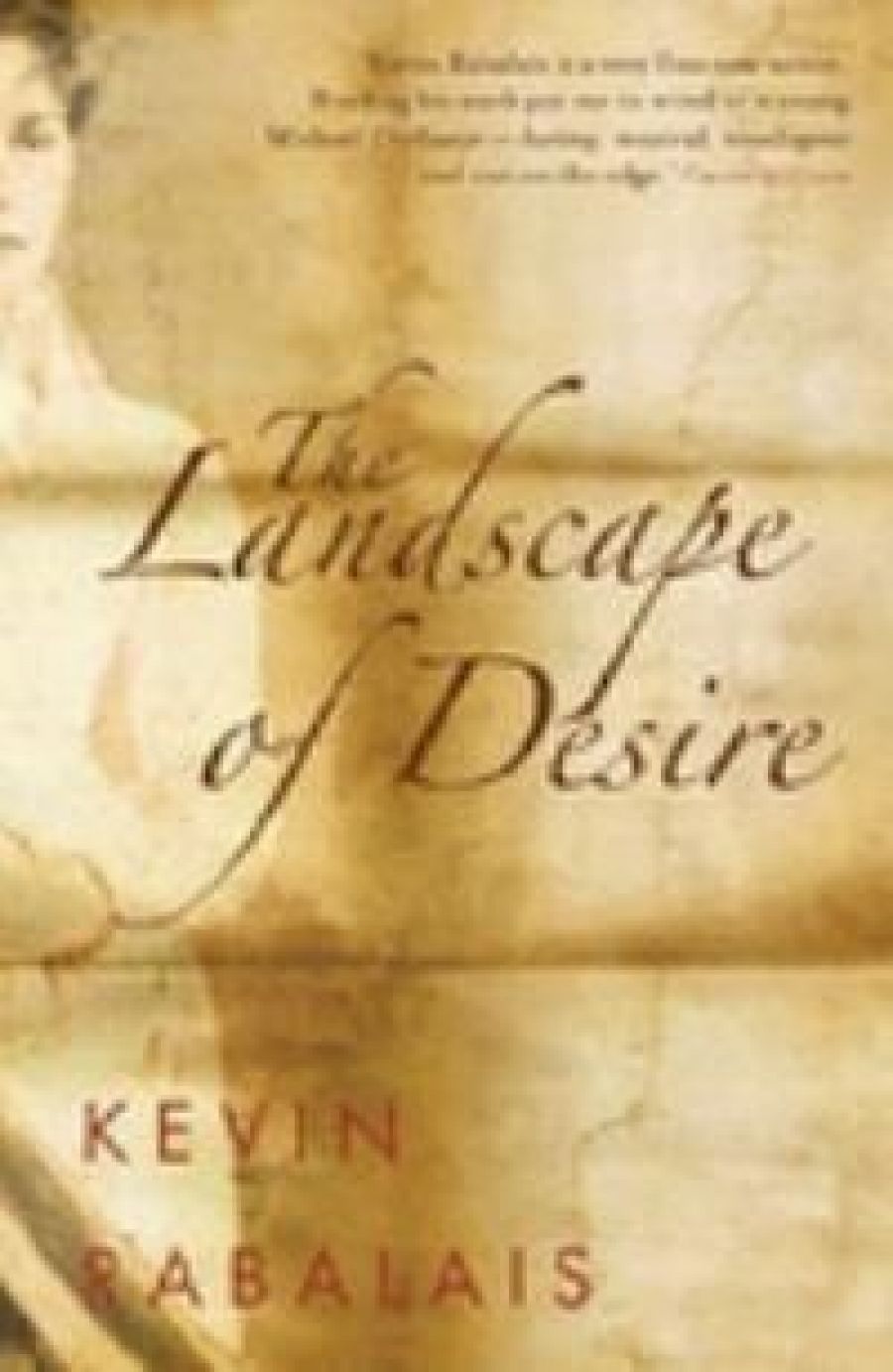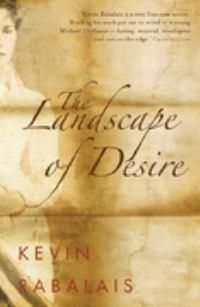
- Free Article: No
- Custom Article Title: Burke and Wills and King and Howitt
- Review Article: Yes
- Article Title: Burke and Wills and King and Howitt
- Online Only: No
- Custom Highlight Text:
For many Australians, the Burke and Wills odyssey is a sketchy episode in our history. For Kevin Rabalais, a recent immigrant to this country from New Orleans, the fragments of the story were obviously an intriguing premise for a novel. His first novel, The Landscape of Desire, retraces this expedition and the later one led by Howitt that set out to find the missing explorers. The strange thing is that the author does not approach his work as historical fiction, but as literary fiction.
- Book 1 Title: The Landscape of Desire
- Book 1 Biblio: Scribe, $29.95 pb, 288 pp
- Book 1 Cover Small (400 x 600):

- Book 1 Cover (800 x 1200):

In smooth, assured prose, Rabalais recalls the stories of the various explorers who, amid much pomp, left Melbourne in 1860 to probe the mysterious interior of the continent. He makes little attempt to fill in the gaps in the story, but prefers to evoke the nebulous myth that surrounds these shadowy entities. He is fond of phrases such as ‘the veil of trees’, which occurs twice in the first three pages. His characters seem to drift through the ‘barren inland sea’, impressionistic, mystifying and bordering on madness. Early in the novel, before his departure from Beechworth for the desert, Burke is described thus:
Here, in the outer district of the colony, much of the land still indecipherable to him, he has learned to glide unnoticed across the sparse architecture of days. In a land that leaves no opportunity for secrets, everything, he thinks, falls to chance. Lives bask in the open. There is little room to hide. Secrets, dispersed like seed, grow under the community’s watchful gaze.
The title indicates what will follow. The central character is the landscape, and it is desire, whether it be for fame, fortune or romance, that drives the men into the desert and threads their lives together. There is no hero, and no one endears himself to us. The point of view is that of an impersonal narrator in a hostile world, a world where alienated men stumble through a barren country.
The author looks most closely at Burke, but dwells more on his failings than on his charisma. He is portrayed as a poor leader: at times a gambler and womaniser, hot-headed and reckless; at others a recluse. Rabalais has stuck closely to the facts and to the characters and the relationships between them as recorded in history, and maintains a consistent sense of time and place. Wills, the meticulous surveyor who keeps records of the journey, is handled with more distance, as befits his character. He is discreet, loyal to Burke and always a gentleman, even in the desert.
The high point of the novel is the story recounted to Howitt by the exhausted William Brahe, one of Burke’s party who is left at Cooper’s Creek to wait there in charge while Burke, Wills, King and Gray make their way to the Gulf of Carpentaria. It is refreshing to hear the account of Burke’s decision to make a break for ‘victory’ firsthand. The balanced perspective is that of the trustworthy German, who paints a rich portrait of the explorers and their predicament. We have a clear image of Burke floating on his back in the creek, in view of grinning Aboriginal children, as he declares his plan to Brahe. Intimate insights into the minds of other characters other than Brahe, in particular Burke and Wills, would have made for a more compelling narrative.
Rabalais’s fiction has many strengths: a lyrical quality, spare prose that suggests an age when life was simpler and more brutal, and a dreaminess that echoes the drifting sands and minds unhinged by deprivation. These strengths also work against the narrative. The many characters come and go in a sequence that appears almost random, as if the chronological episodes had been rearranged to form an interesting pattern and to keep the reader intrigued. But the result is confusing on first reading.
The third-person narrative homes in on Burke, then Wills, then King, then Howitt. With few signposts in this novel’s landscape, we are expected to recognise each character as he steps into the limelight, but often it takes a page or two to be sure. Clearer signals of character, time and place would make the narrative easier to read and more compelling.
The result is a novel that is hard to read, best undertaken at a single sitting. Re-reading the novel, I was struck by details that are gleaned later, and everything falls into place. Perhaps Rabalais assumes that all Australians will be familiar with the Burke and Wills story; not everyone is.
The feminine is represented in the character of Julia Mathews, a young actress in a touring theatre company, who is beloved by both Burke and Wills. This child-woman is seen mainly through the men’s eyes, Burke’s in particular. Both men take one of her kid gloves into the desert, a token of this idealised female vision. The men, in this respect, are more infantile than the woman, who remains pragmatic in her double courtship.
In recounting this romance, Rabalais follows historical fact, as he does throughout the novel. Mathews did exist; she was a precocious star of musical theatre at the time. Burke was an admirer; he did propose marriage to her. But in trying to flesh out this young woman, to see through her eyes, Rabalais is on shaky ground. It is she whose story forms the epilogue, whose life goes on, haunted by the ghosts of Burke and Wills. Her nightmares are unconvincing. She is unable to bear the weight of the story, its deaths and its desolation, so finely narrated in a poetic and hypnotic voice.


Comments powered by CComment